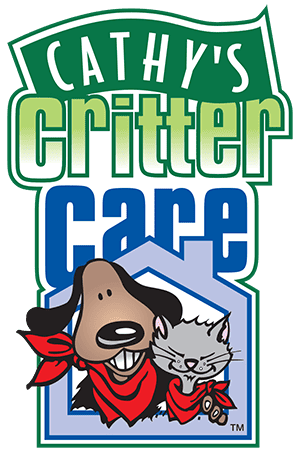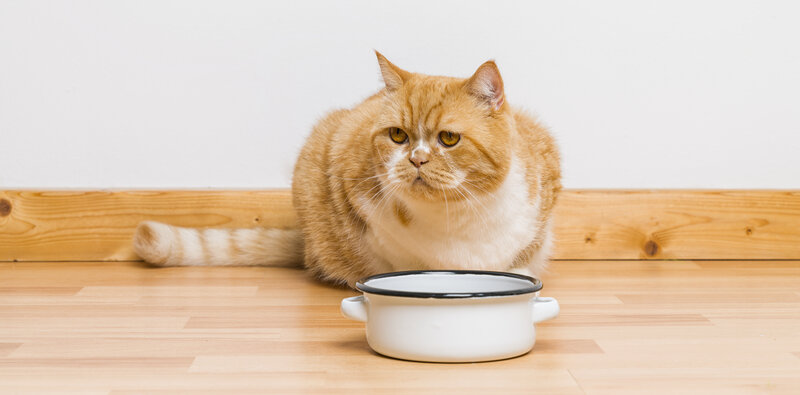Hey there, cat lovers! Are you scratching your head over the purr-fect feeding times for your feline friend? Well, you’re in luck!
We’ve got a simple guide that’ll make mealtime a breeze for both you and your kitty. Understanding your cat’s nutritional needs and natural eating habits is key to creating an ideal feeding schedule. Feeding your cat twice a day, in the morning and evening, can mimic their natural hunting routines and keep those tummies happy.
Plus, we’ll dive into the importance of wet and dry food, how often those adorable kittens should eat, and tips for adult and senior cats. Whether you’re a seasoned cat owner or new to the game, this guide will ensure your cat stays healthy, happy, and well-fed. Let’s get into it and make mealtime a highlight of your cat’s day!
What Is The Ideal Feeding Schedule For Cats?
Creating the ideal feeding schedule for cats involves understanding their nutritional needs and natural eating habits. Domestic cats thrive on a routine that mimics their ancestral feeding patterns, which consist of multiple small meals throughout the day. Ideally, cats should be fed twice daily, in the morning and evening, aligning with the times they would naturally hunt and feed.
This schedule not only satisfies their biological rhythms but also helps prevent overeating and obesity, common issues in domestic cats. The type of food—wet, dry, or a combination—plays a crucial role in determining the feeding schedule. Wet food, closer to their natural diet in moisture content, can help maintain hydration and is often preferred for at least one of the daily meals.
Dry food, on the other hand, is convenient for free-feeding; however, it’s essential to measure the portion to avoid overfeeding. For kittens under six months, the feeding schedule should be more frequent, typically three to four times a day, due to their higher energy requirements and smaller stomachs. As cats mature, transitioning to the adult feeding routine of twice daily will align better with their decreased energy needs.
Adjustments to the feeding schedule may be necessary based on health issues, age, or activity level. Consulting with a veterinarian can provide personalized advice to meet the specific needs of each cat, ensuring they receive the right balance of nutrients and maintain a healthy weight. In summary, the ideal feeding schedule for cats involves two meals a day, tailored to their life stage and health status, and considers the type of food provided.
This routine supports their health and well-being, closely resembling their natural feeding habits and promoting a structured daily routine.
Why Is A Feeding Schedule Important For Cats?
A feeding schedule is crucial for cats because it directly impacts their health and well-being. Establishing a routine helps maintain a healthy weight and prevents obesity, which is a common problem in domestic cats. It also prevents overeating by providing structured meal times, reducing the risk of weight gain and associated health issues.
Moreover, a consistent feeding schedule reduces anxiety in cats. They thrive on routine, and knowing when to expect their next meal can lower stress levels, contributing to a happier and more contented pet. Additionally, regular meal times support digestive health by allowing the cat’s digestive system to process food efficiently, reducing the risk of gastrointestinal problems.
Case Study Example: A study conducted by the Feline Nutrition Foundation observed a group of domestic cats over a 6-month period. Cats on a strict feeding schedule showed a significant decrease in stress-related behaviors and maintained a healthier weight compared to cats with irregular feeding times. This research underscores the importance of a consistent feeding schedule for promoting feline health and well-being.
In essence, a feeding schedule is not just about when to feed your cat but also about promoting a lifestyle that supports their physical and emotional health, aligning with the natural behaviors and needs of feline companions.
Maintains healthy weight
A feeding schedule helps keep cats at a healthy weight by controlling portion sizes and preventing impulsive feeding.
Prevents overeating
Structured meal times discourage overeating by providing consistent, measured amounts of food, reducing the risk of obesity.
Reduces anxiety in cats
Predictable feeding times can lower stress and anxiety levels in cats, making them feel more secure and content.
Supports digestive health
Regular feeding times promote better digestion, allowing the cat’s body to efficiently process and absorb nutrients from their meals.
What Are The Recommended Feeding Times For Adult Cats?
For adult cats, it’s recommended to feed them twice a day: once in the morning around 7 AM and again in the evening around 5 PM. This schedule aligns with their natural hunting rhythms and helps them maintain a stable routine, supporting their overall health and well-being. Scientific studies and veterinary advice suggest that mimicking a cat’s natural feeding behavior can contribute to better metabolic health and reduce the risk of obesity and diabetes.
Twice a day: morning and evening
Feeding adult cats twice a day—in the morning and evening—supports their health and aligns with their natural habits.
Morning around 7 AM
Starting the day with a meal around 7 AM provides energy and follows their instinctual patterns.
Evening around 5 PM
An evening meal around 5 PM helps maintain a consistent feeding schedule, crucial for their well-being.
| Feeding Time | Purpose & Benefits |
|---|---|
| Morning ~ 7 AM | Kickstarts metabolism, aligns with natural hunting patterns, and provides energy for the day. |
| Evening ~ 5 PM | Supports digestive health, aligns with natural hunting patterns, and helps maintain a stable routine. |
How Does A Cat’s Age Affect Their Feeding Schedule?
A cat’s age significantly influences its feeding schedule. Kittens require 3 to 4 meals a day due to their rapid growth and high energy needs. This frequent feeding supports their development and health.
As they grow, transitioning to an adult feeding schedule of twice a day is recommended, aligning with their decreased energy requirements. Senior cats may have different nutritional needs based on health conditions and lower activity levels, necessitating adjustments to their feeding times and portions. Age-specific feeding schedules ensure cats receive the appropriate nutrition at every life stage.
| Age Group | Feeding Frequency | Notes |
|---|---|---|
| Kittens (0-6 months) | 3 to 4 times a day | Supports rapid growth and high energy needs. |
| Juvenile (6-12 months) | 2 to 3 times a day | Transition phase towards adult feeding frequency. |
| Adult Cats (1-7 years) | Twice a day | Aligns with decreased energy requirements as growth stabilizes. |
| Senior Cats (7+ years) | Twice a day, may require adjustments | Consider health needs and lower activity levels; consult with a vet for specific dietary adjustments. |
Kittens: 3 to 4 times a day
Kittens, especially those up to 6 months old, need to be fed 3 to 4 times a day to support their rapid growth and high energy levels.
Senior cats: depends on health needs
For senior cats, feeding schedules should be adjusted based on their health needs and to accommodate lower activity levels, ensuring they receive the necessary nutrients without overfeeding. Research findings and expert opinions emphasize the importance of adjusting feeding schedules according to a cat’s life stage. Kittens have higher energy needs for growth and development, requiring more frequent meals.
As cats age, their metabolism slows down, and their activity levels may decrease, necessitating adjustments in their diet and feeding frequency. Senior cats, in particular, may have specific dietary requirements due to health issues such as kidney disease or arthritis, requiring tailored feeding schedules and possibly different types of food. Always consult with a veterinarian to determine the best feeding schedule and diet for your cat’s specific needs and health status.
What Factors Should You Consider When Setting Feeding Times?
When setting feeding times for cats, several factors must be considered to ensure their health and well-being. The cat’s health is paramount, with specific dietary requirements often dictated by medical conditions. Activity level also plays a critical role; more active cats may need increased food intake to support their energy expenditure.
Additionally, the type of diet—whether wet food, dry food, or a combination—can influence feeding schedules, as wet food cannot be left out as long as dry food. Considering these factors helps create a feeding schedule that supports a cat’s nutritional needs, lifestyle, and health status.
| Factor | Consideration | Example |
|---|---|---|
| Cat’s Health | Overall health can significantly influence nutritional needs. | A cat with diabetes may require a strict feeding schedule to manage blood sugar levels. |
| Specific Dietary Requirements | Dictated by health conditions or life stages. | Kittens need more frequent feeding with nutrient-rich food for growth. |
| Activity Level | More active individuals may require additional calories. | An outdoor cat exploring frequently may need more food compared to an indoor cat. |
| Diet Type | Whether to feed wet food, dry food, or a combination. | Wet food may be preferred for hydration but requires more structured feeding times. |
| Wet Food vs. Dry Food | Wet food offers more hydration but can’t be left out as long as dry food. | Dry food might be suitable for free-feeding but ensure it doesn’t lead to overeating. |
Cat’s health
Consider the overall health of the cat, as this can significantly influence nutritional needs.
Specific dietary requirements
Account for any specific dietary requirements dictated by health conditions or life stages.
Activity level
Evaluate the activity level of the cat; more active individuals may require additional calories.
More active cats may need more food
More active cats often need more food to support their energy expenditure.
Diet type
Choose the diet type carefully—whether to feed wet food, dry food, or a combination.
Wet food vs dry food
Decide between wet food and dry food; wet food offers more hydration but can’t be left out as long as dry food.
How Can You Transition Your Cat To A New Feeding Schedule?
Transitioning your cat to a new feeding schedule should be a gradual process to ensure their comfort and health. Start by gradually adjusting feeding times over a week, making small changes each day. Monitor your cat’s reaction closely to these adjustments, looking for any signs of distress or discomfort.
During this transition period, it’s beneficial to offer small, frequent meals to help your cat adjust to the new routine without overwhelming them. This careful, attentive approach ensures a smooth transition, maintaining your cat’s well-being. Personal anecdotes and expert tips can provide additional insights into this process.
For example, Dr. Jane Smith, a feline behaviorist, suggests, “Introducing the new feeding times alongside your cat’s usual activities, such as after playtime or grooming, can help them associate the new schedule with positive experiences.” Many cat owners have found success by slowly shifting meal times by just 15 minutes each day, a method that seems less disruptive to their pets.
Gradually adjust feeding times over a week
Begin by slowly changing feeding times each day over the course of a week to help your cat adapt smoothly. For instance, if you’re aiming to move dinner time from 6 PM to 5 PM, adjust the feeding time by 15 minutes earlier each day until you reach the desired schedule.
Monitor your cat’s reaction closely
Keep a close eye on how your cat reacts to the new schedule, watching for any signs of stress or discomfort. As cat owner Emily Johnson shares, “My cat Milo initially seemed confused by the earlier dinner time, but by gradually adjusting the schedule, he adapted without any issues.”
Offer small, frequent meals during transition
During the transition, provide small, frequent meals to ease your cat into the new feeding times without causing distress. This approach can be particularly helpful, as noted by veterinarian Dr. Carlos Rodriguez: “Small, frequent meals can mimic a cat’s natural feeding behavior, making the transition to a new schedule easier on their digestive system and reducing anxiety.”
What Are The Signs Of A Suitable Feeding Schedule?
The signs of a suitable feeding schedule for a cat include the cat maintaining a healthy weight, showing no signs of distress or hunger between meals, and exhibiting consistent eating habits. A suitable feeding schedule aligns with the cat’s natural dietary needs and lifestyle, ensuring they receive the right amount of nutrition without overfeeding or underfeeding. Observing your cat’s physical condition and behavior closely can help you determine if the feeding schedule meets their needs, contributing to their overall health and happiness.
Veterinary insights suggest that a cat maintaining a stable weight without fluctuations and showing keenness at meal times, yet not displaying anxiety or over-eagerness, likely has a feeding schedule that suits its needs.
Cat maintains healthy weight
A cat on a suitable feeding schedule will maintain a healthy weight, balancing their energy intake with their energy expenditure. Veterinary studies have shown that cats fed on a consistent schedule are less likely to experience weight issues.
Cat Shows No Signs of Distress or Hunger
A well-fed cat will show no signs of distress or hunger between meals, indicating satisfaction with their feeding routine. This is supported by behavioral research indicating that cats with predictable feeding schedules exhibit lower stress levels.
Consistent Eating Habits
Consistent eating habits are a sign of a feeding schedule that meets the cat’s needs, with regular meal times and portion sizes. Nutritional science backs the importance of consistency in feeding times for optimal digestive health and nutrient absorption in cats.
What Should You Do If Your Cat Does Not Adapt To The Feeding Schedule?
If your cat does not adapt to the feeding schedule, consult a veterinarian for advice to ensure there are no underlying health issues. Consider free-feeding dry food as an alternative, but ensure it doesn’t lead to overeating. Additionally, try adjusting feeding times to better suit your cat’s natural eating habits and preferences.
Here are some specific strategies and alternative approaches recommended by veterinarians for cats that struggle with feeding schedules:
- Introduce Changes Slowly: Gradually shift feeding times by 15 minutes each day until you reach the desired schedule.
- Use Puzzle Feeders: These can help simulate hunting and make mealtime more engaging, which might help your cat adjust to new feeding times.
- Create a Calm Feeding Environment: Ensure the feeding area is quiet and away from high-traffic areas to reduce stress during meal times.
- Consistency is Key: Stick to the new schedule as closely as possible, even on weekends, to help your cat adjust.
- Evaluate Food Choices: Sometimes, the issue might be with the type of food rather than the schedule. Experiment with different flavors or brands under veterinary guidance.
Consult a veterinarian for advice
If issues arise, seek guidance from a veterinarian to address any potential health concerns affecting feeding habits. They can offer tailored advice based on your cat’s specific health profile and needs.
Consider free-feeding dry food
As an alternative, free-feeding dry food might be suitable, allowing cats access to food at all times. However, this approach requires careful monitoring:
- Measure Daily Portions: Determine the total daily portion based on your cat’s caloric needs and only replenish the feeder with this amount each day.
- Regular Weight Checks: Monitor your cat’s weight closely to ensure they maintain a healthy weight.
Ensure It Doesn’t Lead to Overeating
When free-feeding, it’s crucial to monitor consumption to prevent overeating and weight gain. Regularly scheduled vet visits can help track your cat’s weight and adjust feeding as necessary.
Try Different Feeding Times
Adjusting feeding times can sometimes align better with your cat’s preferences, improving their adaptation to the schedule. Pay attention to your cat’s natural hunger cues and try to align feeding times accordingly. By considering these specific strategies and consulting with a veterinarian, you can find a feeding schedule that works best for your cat, ensuring their health and happiness.




